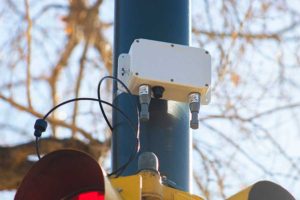By Justin Healey, Regional Business Development Manager
In the last few years, Software as a Service (SaaS) and Data as a Service (DaaS) vendors have emerged with different ways to provide travel time data to transportation agencies. If data provided by these vendors is accurate, reliable and timely enough, these new technologies can save time and money. To illustrate this, we chose a vendor validation project from a few years back to illustrate how to successfully test and validate new technologies.

Alternative: INRIX, HERE and other DaaS vendors provide transportation agencies a database of probe-vehicle data points that are aggregated from GPS-location-enabled vehicles. This can provide statewide (or nearly statewide) coverage without the cost of installing sensors on the entire roadway network.
Question: CDOT wanted to determine if the probe-vehicle data from INRIX was accurate enough to justify an annual subscription, rather than continue to install devices. For this, it would need to meet the FHWA standards for accuracy, timeliness, and reliability, which are listed below.
| Accuracy | Data must be at least 85% accurate compared to ground truth sources. |
| Timeliness | Requested information must be available within 10 minutes. |
| Reliability | Data for 90% of the routes must be available at any given time |
Testing: Using a combination of data from Bluetooth, toll-tag-reader and floating-vehicle travel runs as a “ground truth” data source, Navjoy tested the INRIX data against these sources. INRIX data was evaluated for its accuracy, reliability and timeliness on four types of corridors:
- Urban state and U.S. highways and principal arterials
- Rural state and U.S. highways and principal arterials
- Urban interstates and freeways
- Rural interstates and freeways
For each corridor type, data was tested for one-month on five different corridors.

CDOT now uses INRIX as a source for travel time data statewide, and metropolitan areas have continued to deploy Bluetooth reader devices on principal arterials. It was actually recently used to validate data in the recent SHRP2 Travel Time Reliability study we completed with them. This saves time and budget for more valuable projects. Now, there is a much more efficient way of gathering necessary and accurate data for the FHWA and other selected projects.
Let Navjoy help with research for the best tools for your agency. Email us today to get a consultation.
